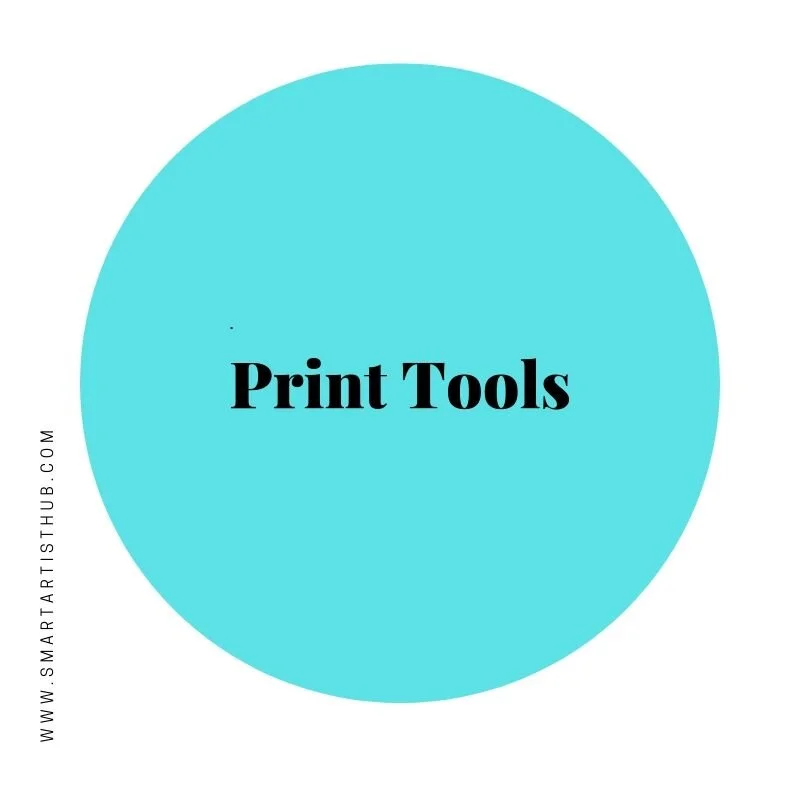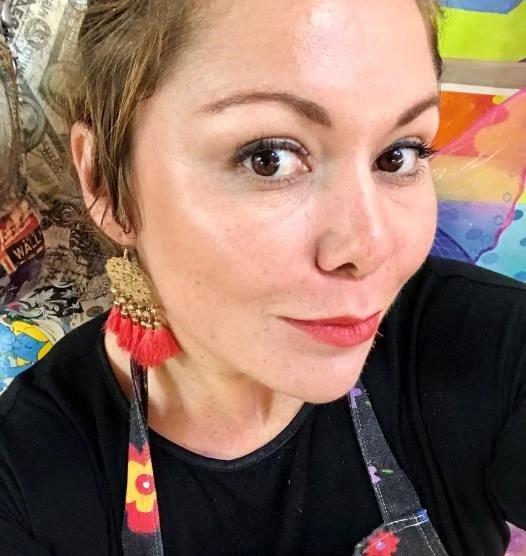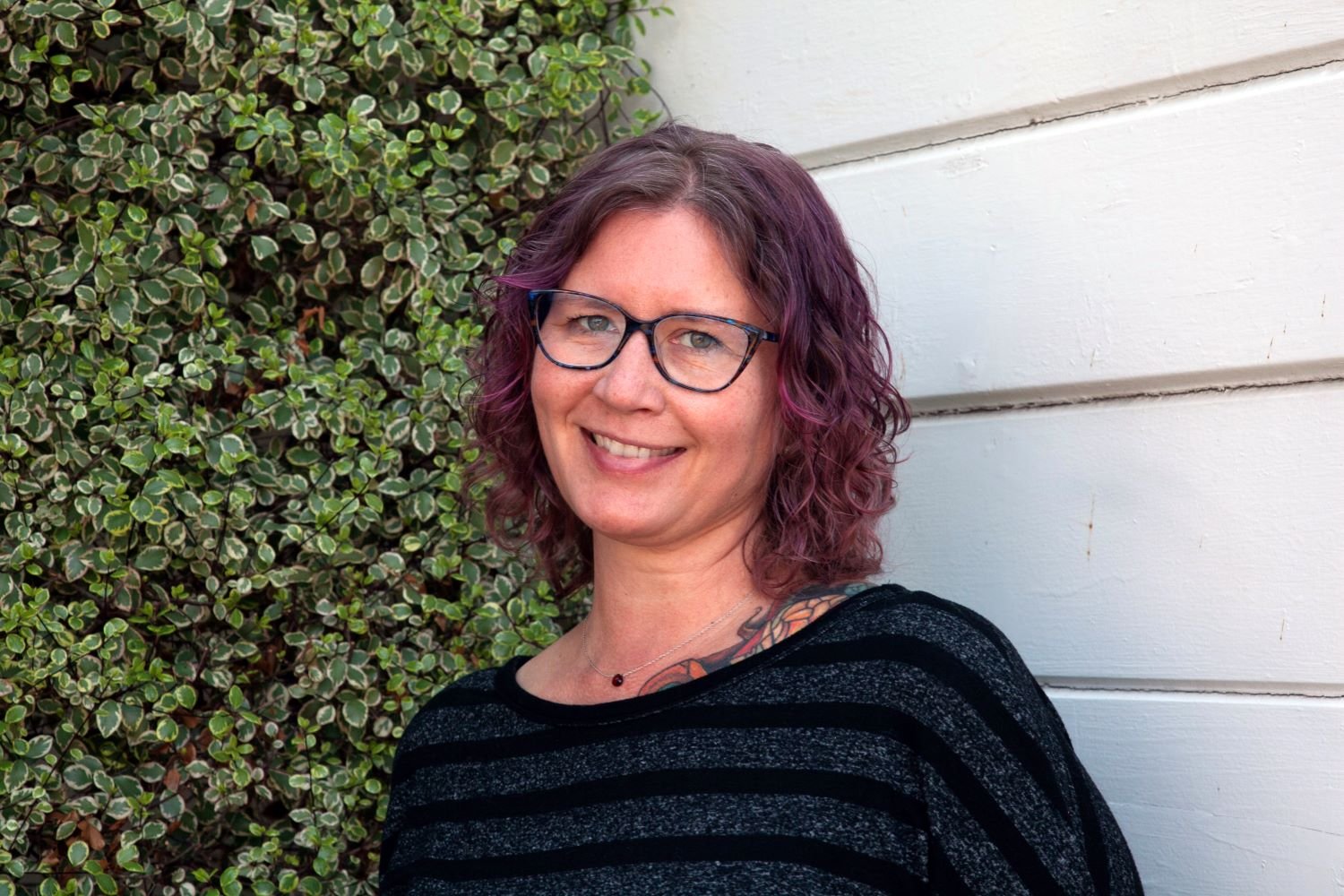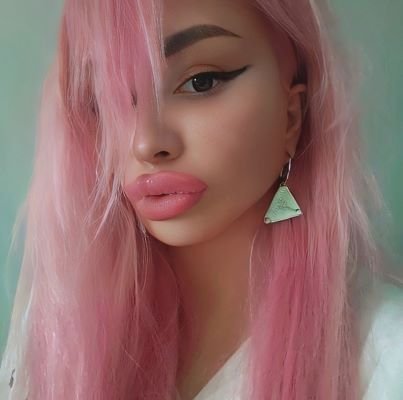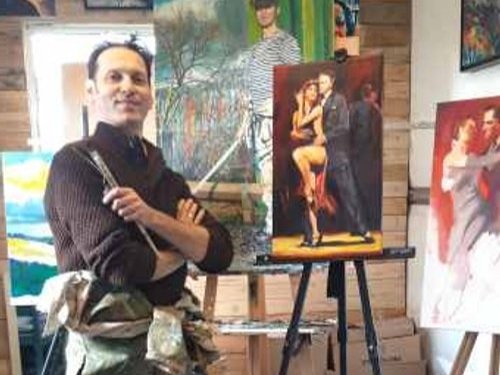How To Get Exposure For Your Art - The Complete Guide To Get Your Art Noticed
Updated January 2025.
Do you dream of having an audience for your art?
You want your art noticed by the right people, but aren’t sure where to start. Despite the advice out there, nothing seems to work.
Don’t despair.
What you need is an engaged audience.
Getting your art noticed not only validates your creativity but boosts sales and gives you the freedom to pursue your artistic dreams. It helps you:
Make a living doing what you love
Quit the job that drains your creativity
Live your dream as a full-time artist
I used to struggle making an income from my art.
I used to struggle too. I was stuck in a 9-5, drained, and unsure if I’d ever “make it” as an artist. I couldn’t understand why some artists, even with less talent, commanded 10 or even 100 times more for their work.
What’s the difference between premium artists and those constantly struggling for attention?
Talent alone isn’t the key.
With dedication and the right strategy, you can build a thriving audience, just like those artists who seem to have it all figured out.
The key is visibility, connection, and engagement.
It’s not enough to just post your art—you need to share your story and connect with an audience that resonates with your journey.
That’s why I created the Interview with the Artist series. It gives you a platform to showcase not just your art, but your unique story, helping you stand out in a crowded space. By signing up, you can amplify your visibility and grow your audience in line with the strategies I’ll cover in this post.
This Guide Will Show You What Needs To Be Done To Get Your Art Noticed.
Most artists don’t know how to kick start their career at the beginning.
It’s safe to say that many full-time artists have tried out different things and learned what works best along the way.
It’s a journey.
The biggest mistake you can make? Failing to take action.
Because failing to take action will not change your current situation.
Failing to take action will not increase your audience.
Find a quiet corner. Sit down and relax.
Understand that you’re completely in charge of this.
Dream big. What does your ideal audience look like? Do you see your work in an upmarket Gallery or local art fair? What does success mean to me? Be specific.
Write everything down. This will help your conscious and subconscious minds focus on your vision.
Don’t let anybody try to talk you out of your vision. People will tell you that you are crazy and that it can’t be done. Some will laugh at you and try to bring you down to their level.
Don’t listen to them.
Your Four Pillars Of Strength
It is imperative to believe that it IS possible to transition your art from a part-time passion into a full-time career.
Limiting beliefs are a huge obstacle in an artist’s career.
So, first of all, we need to break them down. By doing this you‘re able to create a solid foundation to allow your artwork to shine.
Your foundation is made up of four overlapping attributes:
Confidence
Motivation
Discipline
Desire
Each attribute plays an important role, so let’s look at them more closely.
1. Confidence in yourself and your work
You can only reach your goals if you believe they are possible. Having tons of confidence in your work helps you stay strong when criticism tries to reduce you into a weeping pile of self-pity.
If you are struggling with confidence, check out this article How to boldly pursue your artistic calling even if you’re riddled with self-doubt
2. Motivation to move toward your goal relentlessly
Take control, you are the only one responsible for your art.
Taking a passive approach such as waiting for an art dealer, collector or gallery to pluck you from obscurity ain't gonna cut it.
Nobody will buy your art let alone view it if you hide it away. You need to find your audience and make sure they get to know you.
You must take a proactive approach, nobody else can do this for you.
3. Discipline to keep striving and creating over the long haul
When the going gets tough - and trust me it will - the disciplined keep going.
They push beyond their comfort zone and keep moving forward.
Getting your artwork seen by as many as possible requires tons of effort and little luck. Focus on what you can control and let the forces beyond your control take care of the luck.
4. An interest to view your work as a business
Embrace this concept, it’s a huge hurdle for many artists. Plan your career goals and define your objectives. Struggling with this? This might be of interest The Ultimate Art Business Checklist
Your Moment is Here!
Get featured in our Interview with Artists series and showcase your unique journey.
Share your story and inspire others!
Shine the spotlight on your message
Let’s look at your message because a strong foundation is nothing without a strong message. Your message, values and how you talk about your art and yourself are important.
Make it strong, otherwise, it will fall apart at the first hurdle and you’ll not be able to reach your goal. With so much noise competing for the attention, you need to make sure your message is meaningful and that it captures the interest of your audience.
Whether you are networking or preparing promotional material, make sure you explain your art in detail. When talking about your art include the following:
Why are you creating art
Why are pursuing it
How are you executing it
You want to be able to comfortably articulate your ideas, your creative process and your work. Many artists believe that art speaks for itself, I am sorry to disappoint you, but this is not the case.
So, make sure you get this right.
If you’re struggling with this, determine three strong adjectives that describe your art. Select adjectives that paint a vivid picture and ensure these pictures align with the art you create.
You can find more on the topic here How To Better Talk About Your Art
Drive The Conversation With Your Purpose Statement
Most people do enjoy talking about themselves. But there are also people—like me—who don’t love it so much.
Given the choice, I’d always choose to be on the asking side of the question.
However, to create exposure for your art, you must embrace an equal mix of online and offline marketing techniques. This means getting out of the studio and into the public eye.
When you’re out networking one question you will hear often is:
“What do you do?”
I found it such a great help to prepare an answer to this common question.
Aim to intrigue your listener by creating a purpose statement.
This is a one-sentence statement that explains what you do, for whom and why.
The structure of a one-sentence statement would look like this:
Who/action/subject/audience/benefit
For example, I would say something like this:
I/teach/workshops/to ambitious artists/who are ready to gain more exposure
Shine The Spotlight On Your Values
These days, technology gives everyone with a dream the capabilities and tools to reach incredible amounts of people.
But how do you differentiate yourself from others in the field?
You stand out by communicating your values and your message in a concise and interesting way.
Ask yourself this: Is your message relevant to your audience?
The aim of your message is to:
sell the benefit of your work
evoke feelings
challenge the intellect
Use storytelling to communicate your message. People remember a good story and pass it on. Good storytelling will hold the attention of your audience and help you stand out from the crowd. Also, make sure you communicate your message consistently through all the tools you decide to use.
Think Mount Everest
Now that your foundation is in place, you want to get clear about your goals.
How big do you want your audience to be?
Which gallery do you want to work with?
How much money do you want to make?
Be as specific about your goal as possible. I totally understand that it’s easy to get overwhelmed by big goals and the enormity they represent.
However, keep in mind that big goals are achieved by breaking them down into small, manageable tasks and starting to do them one by one. Unsure what needs to be done to accomplish your goal?
There are many ways to figure this out, for example:
Ask fellow artists, what did they do to get their art noticed.
Consult with industry experts who have already gone through this process
Network, ask questions on industry-specific forums
Purchase a book or search online for a guide or manual
Be open to learning new tasks and skills if needed, and keep in mind that it’s impossible to know everything. Keep researching until you can create a realistic action plan.
More on the topic: The Importance Of Setting Ambitious Goals
Your Tool-Box
Once you have a plan of action in place your toolbox will help you to reach your goal. Pick a few tools which will help you reach the people you want to reach. In this guide we look at the following tools in more detail:
Online Tools
Websites
Online marketplaces
Blogs
Mailing list
Newsletters
Press releases
Competitions
Social media
Grants
Public opportunities
Off-line Tools
Public opportunities
Art organizations
Community
Teaching
TV and Film
Art Shows and Exhibitions
Art Fairs
Publishers
Galleries
Networking
Collaborations
Business Cards
Flyers & Posters
Postcards
Merchandise
Create An Irresistible Online Presence With Your Website
There is no way around it – you must have a website.
Most art world professionals and art buyers consider it unacceptable not to have one. Galleries, curators, collectors and the press rely on your websites to quickly find accurate, up-to-date information.
Whether you’re networking, applying for a project, or submitting your work for an art competition, it’s important to have a place where you can direct people to see your work.
A basic website is easy to put together, cheap to maintain and a great way to make your work accessible to a wider audience. Apart from your studio, it’s one of the only places where you have total control over how people view your art.
Build a website to showcase your work. Choose a layout that is attractive and easy to navigate. Aim for a fresh and modern, but timeless look. If you don’t know how to set up a website, take a class or get a friend to do it for you. There is really no excuse not to have one.
Curate Your Work
It can be tempting to show off all your work online but be selective when choosing what to include. IIf your website includes too many examples of your work, visitors are less likely to view them all. Some of your best pieces may never get seen!
Or, if you include pieces that don’t represent your best work, they can distract potential clients from the rest—and make your entire body of work seem weaker overall.
Turn Your About Page Into A Masterpiece
Make sure your website has an artist statement and an about page.
Your about page is a very important tool. It’s where you tell your story.
As mentioned before, your story is important and helps sells your art. Your story allows potential clients to get to know the artist behind the art.
More important, the right people will connect with your story and you can start building your audience - one person at a time.
Artist Statement
An artist statement describes how you work and what your art means. You’ll need your statement available on your website and also when you submit your work to art competitions. It’s a cornerstone of creating your brand identity as an artist.
More on the topic: 7 Big Mistakes Visual Artists Make When Building a Website & How to Avoid Them
Resources
>Squarespace
Squarespace is a user-friendly platform for visual artists to create customizable websites or online stores, allowing them to showcase and sell their work online with ease
>Wordpress
WordPress is a versatile platform that enables visual artists to create custom websites, showcase their work, and connect with a wider audience.
Online Art Market Places And Online Art Galleries
Many artists offer their work for sale through a wide range of online marketplaces, print-on-demands sites and galleries. Some well-known sites attract a huge audience and can generate sales worldwide.
The challenge is ensuring that your work is visible on platforms that are used by so many artists. Some online galleries are open to any artist who pays a monthly or yearly fee while others are by invitation only.
Terms and conditions vary greatly so make sure you read them before signing up or applying.
Online art galleries
Print on Demand: The Smart Way to Sell Your Art Without Inventory
Print on demand platforms like Printify offer a powerful solution for artists who want to sell their artwork on a wide range of products without the hassle of managing inventory. I use Printify, to monetize designs. Designs can be printed on everything from t-shirts and mugs to posters and phone cases—on-demand, and shipped directly to your customers.
No Upfront Costs: You don’t have to buy bulk products or pay for printing in advance. Printify takes care of production and fulfillment as each order comes in.
Print on demand:
Skyrocket Your Mailing List
One of the most valuable assets you can create as an artist is a list of people who are interested in your work or have purchased from you before.
Once you have your audience’s email, you can easily notify them of new art for sale, making it simpler to generate revenue and create buzz around your latest pieces. Selling to existing collectors is far easier than attracting new buyers.
A strong email list can also help you gain access to galleries, both online and brick-and-mortar.
Focus on building your email list by collecting names, email addresses, and even physical addresses. Make sure your website has a clear sign-up option, and consider using email marketing tools to simplify this process.
Offer incentives like discounts or free shipping for those who sign up. You can also provide valuable content in exchange for an email address. The effort you put into growing your list will pay off in the long run.
This version keeps all the important points but is more concise. Let me know what you think!
Want to automate your Newsletter? Read this article: How to Set Up Email Automation for Your Art Newsletter: A Step-by-Step Guide
Resources you can test for free
Use Your Blog To Build A Buzz Around Your Art
Adding a blog to your website is a game changer for getting your art noticed. It gives potential customers a chance to learn more about you and what matters to you. Through your blog, you can show off your expertise, whether you're sharing a behind-the-scenes look at your creative process or offering tips for fellow artists.
The Power of Keywords
But there’s more to it than just writing great content—using the right keywords is crucial. By targeting the right search terms, you make it easier for people searching for topics related to your art to find you. Keywords are what connect your blog posts to the right audience, driving organic traffic to your site and increasing your visibility.
Tools to Help You Rank Higher
Using tools like Mangools KW Finder can help you identify the best keywords for your art business, allowing you to create content that ranks well in search engines and reaches the people who are most likely to be interested in your work.
Showcase Your Knowledge and Build Authority
Info-packed blog posts not only give insight into what makes you tick but also demonstrate your knowledge, positioning you as an industry leader. Think of your blog not just as a way to promote your art, but as an opportunity to participate in a larger conversation about the things you care about—whether that's art techniques, creativity, or other topics relevant to your audience.
Rock Social Media And Get Your Work Noticed Around The Globe
Social media is a great tool for growing the audience for your art.
Think about what you would like to achieve through social media. As mentioned before, have a goal. Having a goal makes it easier to track your progress and identify areas which need more work. Start by creating a social media strategy based on your goals.
Consider the following when planning your strategy:
What do you want to get out of your artist promotion campaign?
What type of audience do you want to target?
Which platforms you are going to use?
If you’re using your personal social media accounts to promote your art online, consider creating business accounts across all platforms you’re using. This will make you look more professional. It will also give you access to more analytics tools to enhance your social media marketing strategy.
Get Your Followers To Promote You
Peer-to-peer promotion should be part of your social media strategy.
Get creative and find ways to get your followers to promote your work.
One way to do that is with contests. For instance, some companies offer free products as prizes and ask participants to enter the contest by making a post that mentions the company or product.
For example, you could ask the participants to create a post about their favourite piece from your website and offer one of your artworks as a prize.
This way, you’ll have participants showing off your work to the people in their networks.
Cross-Promote With Other Artists
There are lots of artists out there in the same position as you: they’re also looking for ways to promote their work.
So, one easy way to get some free artist promotion is to agree to cross-promote with another artist. It can be as simple as creating posts that highlight the artist’s work and what you like about it, with an agreement that they will do the same. It’s an art marketing win-win situation: you’ll both get more ‘eyes’ on your work.
Since everyone’s taste in art is different, you can cross-promote without worrying about sending potential clients to a competitor.
You can find more on the topic here: Connect and Cross-Promote With Other Artists
Your Press release
A press release can be a cost-effective way of creating a buzz around your artwork.
A press release in a magazine or digital media gives you credibility. It enhances your reputation and for some buyers seeing your work in a magazine might give them the confidence to buy it.
Resources
Raise Your Profile With Art Competitions
An art competition can be excellent in raising your profile. If you manage to win, not only will you earn attention for your art, but it also shapes your reputation as a great artist.
Even if you don’t win the competition, entries are often shared by the organisers on social media, and many competitions will show off runner-ups and mention recently submitted entries.
Resources
Apply For Grants
Getting awarded an art grant gets your art noticed and raises your reputation as an artist. Selected artists can benefit from media coverage, and organizations that give art grants like to promote the artwork they’ve supported.
There are many art grants available. Look for ones that are the best fit for your artwork and get started on writing that winning application.
Tips for Finding and Applying:
Find the Right Fit: Look for grants that align with your art style or project theme through sites like Candid.org or Artwork Archive.
Be Specific: Write a clear proposal, detailing your project, budget, and its potential impact.
Stand Out: Craft a strong artist statement and include a polished portfolio.
Winning a grant not only funds your work but also validates your talent and opens doors to new opportunities. Don’t give up—rejections are just part of the journey!
Check Out Public Funded Opportunities
Stay in touch with the local councils and galleries. It's a great way to learn more about their art policies and information about local arts funding.
Furthermore, they can provide exhibition opportunities in publicly owned galleries and spaces which are partially funded by public money.
The selection process and what these galleries offer can vary greatly.
It may include:
Grants for specific projects.
Subsidised studio space.
Exhibitions and exhibition space.
Showing art in public buildings.
Employing artists to work with schools.
Thrive With The Support Of An Art Organization
Besides offering tons of networking opportunities, artist organizations can provide workshops, artist promotion and advocacy, resources, and more.
There are many different artist organizations available. Check out what is on offer in your local area and look for any organizations you might like to join.
Resources
Get Involved in Your Community
This is a great way to get your name out there and help fellow artists at the same time. Some ideas include providing artwork for charity auctions, participating in community art projects like murals or volunteering to teach at community centres.
New to the city?
There are still lots of ways to be part of the community, start building that network and get your art out there.
More on the topic: How To Promote Your Art Locally
Show How It's Done
Teaching and carrying out demonstrations can build an audience for your work and help establish you as an expert. Furthermore, it can give you additional income.
Teaching can entail a wide range of formats and venues. You can tutor a small group of students in your studio, lead workshops at art fairs, carry out painting demos in art material shops or run plein air painting courses.
Promoting your courses helps generate interest in your artwork and gives you something to write about in your blog too.
Place Your Art in Film and TV Projects
Some artists make a living creating art that appears in films and TV.
The artwork required for this is very varied.
It can be a painting hanging in the background of a business logo or a storefront. If your art is in a movie or TV show, your work will get lots of extra exposure.
In addition, your work and your name will be listed in the project’s credits. Get started by contacting local production companies and studios.
You can also reach out to film and TV students in your area. Having your work in a student production might not catapult you into stardom, but it demonstrates your ability to meet the requirements of film and TV productions.
Throw Your Own Art Shows
Organizing your own art show is a great way to learn about art marketing —and it is easier than you think. Getting your work shown is not difficult. The challenging is getting your work into an exhibition space that will help move you towards your goal. There are a variety of venues available to target but try to be selective and realistic at the same time.
Consider making it a group show
More artists provide more art marketing for the show!
Each artist will be able to put the word out to their friends and fans, increasing the reach of your artist promotion.Don’t stick to the traditional venues.
Sure, if it’s in your budget, renting a formal gallery is great. But any place that is open and accessible could work.
The question is where do you start?
Where are you on the career ladder?
Accept your current level of experience and determine your targets accordingly.
Some non-traditional venues
Coffee shop
Restaurants
Office buildings
Empty Shops
Universities
Your Studio
Your Home
Wine bars
Salons
Nightclubs
Storefront windows
Hotel lobbies
Music-halls
Attend Art Exhibitions and Fairs
At art fairs, you can meet lots of art lovers, professional artists, and industry pros like gallery owners and agents. Making contact with industry insiders is extremely important. They can keep you in the loop about new opportunities—like which art galleries are looking for submissions.
They can also help you in marketing your art, whether it’s sharing your art show on their social feeds or suggesting popular artists you could collaborate with.
Don’t forget to bring your business cards, and hand them out to everyone you meet!
It sounds like a small thing, but a well-designed card can really help with artist promotion.
Work With Publishers
This may not appeal to all of you but as well as selling your original work you can profit from reproductions of your art.
The fine-art publishing industry which includes prints and posters is thriving and competitive. It is common for artists to sell licences to greetings-card companies, ceramics manufacturers or makers of stationery.
Selling licences and working with publishers can be an important part of many artists’ incomes, but few could survive on this income alone.
Artists often work with publishers for publicity and extra exposure rather than the money they make from it.
Approach Brick and Mortar Galleries
Artists who are proactive in developing their own reputations and client lists can be an asset to galleries and publishers. It's so much easier to approach a gallery if they are already familiar with your work. Being part of an artistic community helps.
Be active in it.
Meet people.
Always have your phone on you with a small sample of your work.
Do your homework and know which galleries would take your work. Is your portfolio ready?
It should consist of a body of work that shows consistency in ability and style.
The gallery’s interest, or bottom line, is to present work which is sellable to collectors with the expectation that if collectors do buy, they can find similar works in the future.
Be A Busy Networking Bee
When it comes to learning how to promote your art, one of the main skills to master is networking!
Many artists don’t like the idea of self-promoting.
But if you want to get on, you must make the right connections with the right people.
Engage with the art world.
Give it your all and stand out from the crowd. Otherwise, you'll continue making tiny amounts of money and waste your time sending newsletters to a non-existing mailing list. Be informed and stay in the loop of what is going on in the art world.
Listen to the art talk via newspapers, magazines, e-zines, gallery newsletters, blogs, and social media networking sites.
Connect with like-minded people by joining a group, forum, conversation or debate.
Attend art talks and industry events.
Talk to other artists.
Talk to artists who are where you want to be and ask them how they have made it.
Ask successful artists to be your mentor. If they decline, ask somebody else.
Go to gallery openings.
Attending private views is a key element for making contacts and building a network that will support your career. Look at private views as very important networking events.
It is where you can meet like-minded spirits and bond with new found friends over a common love of art. After a while you will notice that attending private views is like being part of a tribe, you will see the same people over and over again.
People will start recognizing you.
And eventually, people will know your name and what you do. Going to private views gets your face known and makes galleries more sympathetic when you approach them at a later stage.
Collaborate on an Art Project
Finding other artists to collaborate with is a great artist promotion strategy.
Having another artist involved means more people will be aware of your work.
Finding other artists who work in the same medium as you are a good place to start. However, if you think outside the box, the opportunities are endless.
For example, you could find a band that needs artwork for their next album promotional material. The visual elements of your venture show your image and your brand to the world. Depending on your needs you may choose some of the following offline printed collateral.
Business Cards
Business cards help people remember your name and where to find your work online.
Your card can be the size of a traditional business card or the size of a postcard.
I love collecting business cards of the work I like at open studios or end of year shows.
I then review the collection at a later point and look up the artists online.
A business card with a name and image on makes this process lot easier.
Flyers and posters
Posters used to be a lot more effective in the days before social media. Back then turning bus stops or lampposts into public bulletin boards was a great way to get promote your event.
However, posters still have their place, post them on public bulletin boards or other public places with a good footfall.I find that local business are usually very supportive when it comes to creating publicity for a creative event or art show.
Postcards
Postcards can make a great impact. They are also affordable and collectible.
They can be used for many different purposes and in many different sizes.
You can download suitable templates from the website of the online printing service you are using.
They also provide a complete guideline for text placement, bleed area, trim and much more. The primary reason to use postcards is to promote the opening of your show.
For this reason, you want to make sure to include the Who, What When and Where.
Merchandise
Have you considered using branded promotional items that feature images of your work? I know this is difficult to consider for all my fine artist friends out there, but it might be an option for anyone whose work contains a sense of fun.
There are several websites devoted to printing on-demand products. You could offer your branded merchandise as a raffle prize or a prize draw to reward people for signing up for your mailing list.
Resources
Showcase Your Talent Through Our Artist Interview Series
Imagine having a platform where your art, story, and creative process are shared with an engaged audience eager to connect with you. That’s exactly what the Interview with the Artist series offers.
By participating, you’ll gain:
Increased Exposure: Your work and story will reach an audience actively seeking inspiration from artists like you.
Credibility Boost: Being featured in an interview positions you as a serious, professional artist.
Personal Connection: Sharing your journey allows potential collectors and fans to connect with your art on a deeper level.
Long-Term Visibility: Your interview remains accessible, continuing to drive traffic and interest in your art over time.
This is your opportunity to stand out, share your unique voice, and grow your audience in a meaningful way.
Ready to Take the Next Step?
Pursuing a career in art is a long-term commitment. Getting your work noticed by the right people doesn’t happen overnight—it’s an ongoing process.
It’s a marathon, not a sprint.
Many artists give up too soon, frustrated by the lack of quick results.
Don’t be one of them!
Focus on consistent effort, and take advantage of opportunities to showcase your talent.
You don’t have to do it all at once.
Even implementing a few of these strategies can lead to growth, new opportunities, and the career you’ve dreamed of.
And now, here’s your next step:
Join our Interview with the Artist series and start building the visibility you deserve. It’s the perfect way to share your story, grow your audience, and move closer to your artistic goals.
👉 Sign up today and take the spotlight! Join the Interview Series Now
Your art deserves to be seen.
Your story deserves to be heard.
Let’s make it happen!
More Stories





